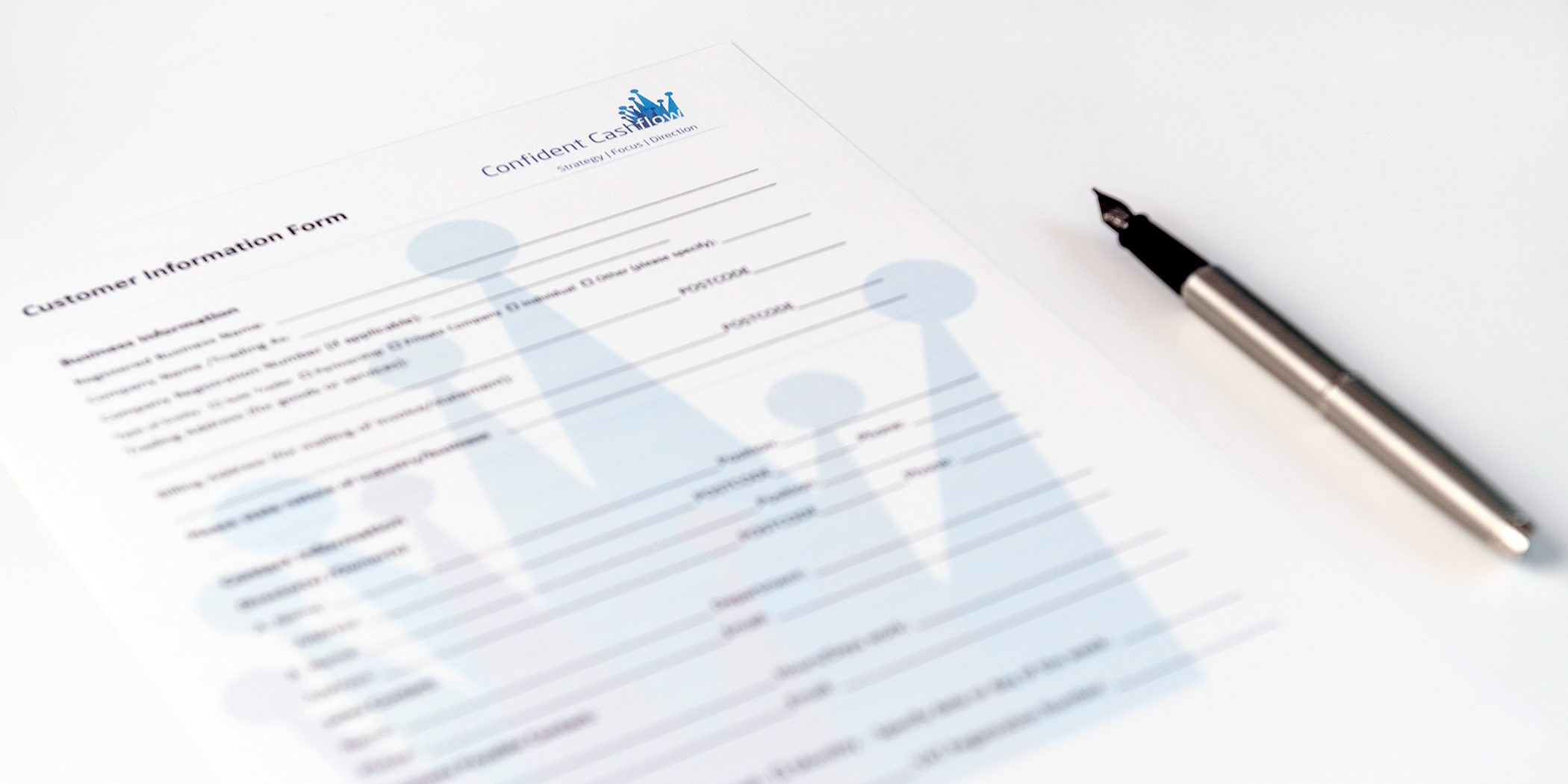Customer Information and Getting paid on Time
We all know about collecting potential customer information for marketing purposes, that all-important email list or social media following, but what about once they become your customer?
I have done credit control for a broad range of small businesses. One thing many of them have in common is incomplete customer records.
Think about the customer experience from them placing an order, through delivery, payment, and future marketing. The more you know about your customers the easier it will be to have meaningful communication and deliver excellent customer service.
So before you start doing business with a customer you should have an onboarding process that includes collecting important information from your customer and recording it somewhere. Especially if you’re going to allow them to pay you after you have delivered the goods or services (trade credit).
Don’t think that because you’re a small business owner this doesn’t apply to you. Whether you have one or one hundred people in your business, you still need this information to manage the relationship with your customer.
Ultimately, it’s about getting all the right information about your customer from the outset, so you don’t get left out in the cold when it comes to getting paid!
The Correct Legal Name
It is essential you are very clear about who you are doing business with.
If your customer is another business what is their legal status? Are they a sole trader, a partnership, or a limited company for example? Is their legal name different to their trading name? We are Confident Cashflow but our legal name is NK Credit Consultancy Ltd. For sole traders the legal name will be the name of the proprietor, the trading name may be different. If they’re part of a group of companies, which one are you trading with?
You don’t want payment delayed because your invoices are addressed to the wrong business!
Or find you can’t take legal action because you don’t really know who to claim against.
This is the minimum information you need to do a credit search too, for credit account applications.
Basic Contact Information
I have known sole trader businesses who only had contact details through a messenger app. When it came time to chase for payment they were blocked and ignored, making it very difficult to get paid.
It’s vital that you have multiple ways of contacting your customer, it’s so easy for one method to become defunct. They change their phone number or email address, change address or delete their social media profiles. If you have multiple methods of getting in touch with your customers at least one of them should still be valid. This is equally true if they are businesses or individuals.
Always alim to collect a name, an email address, a phone number, and a postal address. Don’t forget that the delivery address and the accounting address (to send invoices to) may be different, so you’ll need both.
Accounts Payable
It’s great to have all these details for the person who placed the order, but they may not be the person responsible for paying you.
You should ask for the name, email address and phone number of the person responsible for making the payments.
Bear in mind that not everyone works full time so ask about their working hours too. There’s no point calling to chase for payment on a Monday, if they only work on Wednesdays!
Payment Run Dates
Similarly, it’s also good to understand if they have set payment run days / dates. Do they make payments every day, just on Fridays, or only at month end?
The larger a business the more likely they are to have specific payment run dates. Unfortunately, they’re unlikely to change them for an individual supplier.
There is no point issuing an invoice on 1st of the month with 7-day terms, if your customer only does one payment run at the end of each month. You have three options:
- accept it’s going to be late every month and manage your credit control routine accordingly.
- change the date on which you invoice the customer, so there is less of a gap between issue and payment, or
- If it’s a deal-breaker, you don’t do business with them.
You should also establish how you will be paid.
You may have stipulated payment must be by bank transfer but that could mean faster payment (in your account the same day) or BACS (in your account 3 days after they send it). This is essential for your cash flow forecasting.
Purchase Order Numbers
Many business, particularly smaller ones, don’t bother with Purchase Order (PO) numbers, but you need to check if your customer insists on them.
There’s nothing worse than chasing for payment to be told no because there’s no purchase order number on the invoice. Whilst this may seem like an internal issue for your customer it’s you who suffers through late payment and usually, you are the one who has to resolve the issue!
Keep It Up to Date
This information is only as good as it’s accuracy. It’s important, therefore, to regularly check with your Customer for any changes to their details. This doesn’t have to be a formal process. Whenever you contact a customer just check one or two of the other details are still correct.
Keep It Safe
Under the Data Protection Act 2018 you have a duty to store any personal information about someone securely. Whether that’s in an encrypted database or a locked filing cabinet
Even if your Customer is a business the individual contact details (such as their name) are still personal data.
To make it easier, I have created a template form for you to capture all this data on, either yourself or by asking your customer to complete it.
You can then input this information into your CRM or accounting software or store the form in a safe place.

